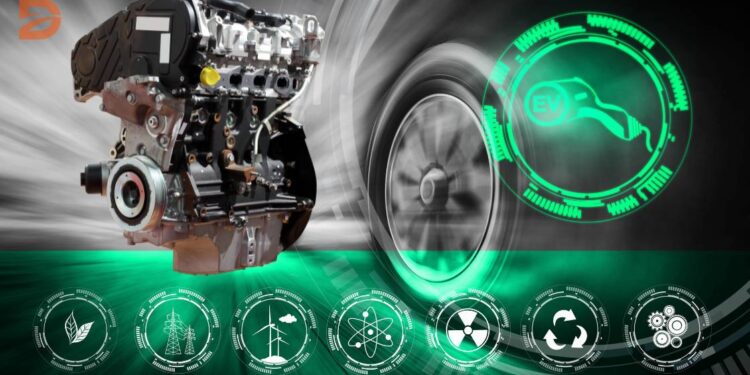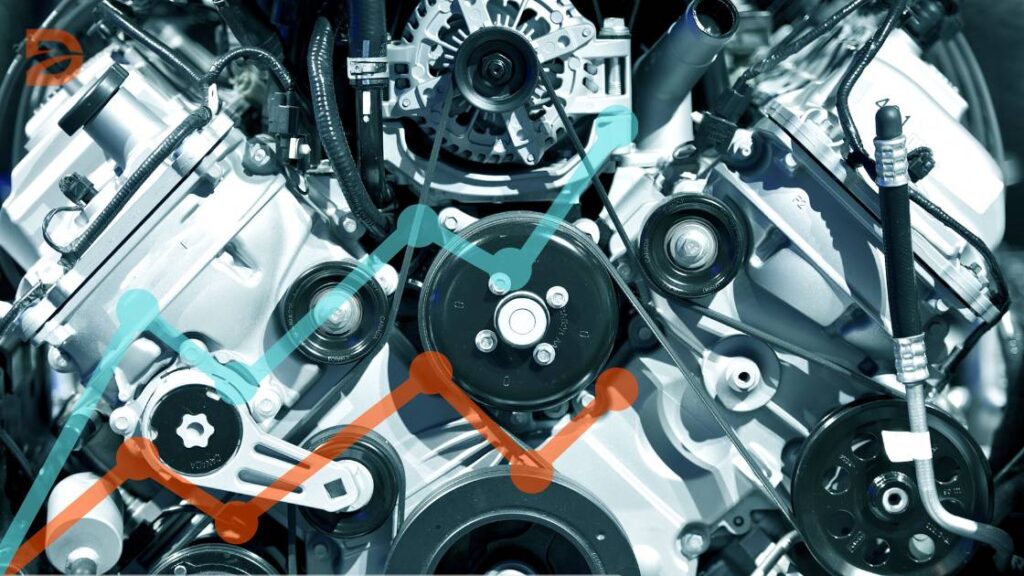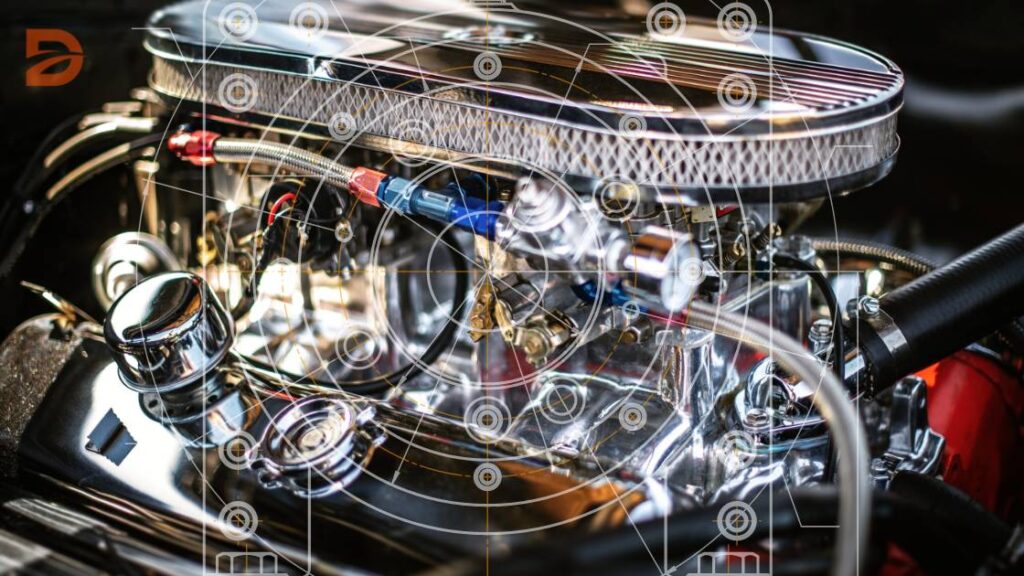Did you know that the Bugatti Veyron, one of the world’s most powerful production cars, has a remarkable power-to-weight ratio of 4.12 lbs/hp? This impressive metric, calculated by dividing the engine’s horsepower by the vehicle’s weight, is a crucial factor in determining a car’s overall performance and efficiency. Understanding the power-to-weight ratio is essential for anyone seeking to enhance their vehicle’s capabilities.
The power-to-weight ratio provides an indication of how much power is available per unit of weight. A higher ratio typically signifies a more powerful and potentially faster vehicle, as it allows for better acceleration, handling, agility, and fuel efficiency. This metric is a vital consideration when contemplating performance upgrades or modifications to your car.
Key Takeaways
- The power-to-weight ratio is calculated by dividing a vehicle’s horsepower by its weight.
- A higher power-to-weight ratio indicates a more powerful and potentially faster vehicle.
- Improving the power-to-weight ratio can lead to better acceleration, handling, agility, and fuel efficiency.
- Lightweight construction and engine performance upgrades can significantly enhance the power-to-weight ratio.
- Optimizing weight distribution and lowering the center of gravity can further improve vehicle performance.
What is Power-to-Weight Ratio?
The power-to-weight ratio is a critical metric that measures a vehicle’s performance capabilities. It’s calculated by dividing the engine’s horsepower by the vehicle’s weight. This ratio provides insight into how much power is available per unit of weight, with a higher power-to-weight ratio indicating a more powerful and potentially faster vehicle.
Definition and Calculation
To calculate the power-to-weight ratio, you simply divide the engine’s horsepower by the vehicle’s weight. For example, a car with 400 horsepower and weighing 2,000 pounds has a power-to-weight ratio of 0.2 hp/lb.
Significance in Vehicle Performance
The power-to-weight ratio is significant in determining a vehicle’s performance capabilities. A higher power-to-weight ratio means better acceleration, as vehicles with a higher ratio can go from 0 to 60 mph more quickly, providing a thrilling driving experience. Additionally, a lighter vehicle with a high power-to-weight ratio handles better and is more agile, improving the vehicle’s ability to navigate turns and corners. Improved handling also means better control at high speeds, making the vehicle safer and more predictable. Furthermore, reducing the vehicle’s weight while maintaining or increasing its power can lead to better fuel efficiency, as a lighter car requires less energy to move.
| Vehicle | Horsepower | Weight | Power-to-Weight Ratio (hp/lb) | 0-60 mph (seconds) |
|---|---|---|---|---|
| Dodge Viper | 550 | 4,070 lbs | 0.135 | 4.1 |
| Ford Escort | 115 | 2,550 lbs | 0.045 | 10.9 |
| Fahlke Larea GT1 S12 | 650 | 1,120 lbs | 0.58 | 0 |
As demonstrated in the table, vehicles with higher power-to-weight ratios, like the Dodge Viper and Fahlke Larea GT1 S12, exhibit considerably faster 0-60 mph acceleration times compared to the Ford Escort with a lower power-to-weight ratio.
Acceleration and Power-to-Weight Ratio
When it comes to vehicle performance, the power-to-weight ratio is a crucial factor that directly impacts acceleration. A higher power-to-weight ratio means better acceleration. Vehicles with a higher ratio can go from 0 to 60 mph more quickly, providing a thrilling driving experience.
Take for example a pickup truck with 290 horsepower and a weight of 4,069 pounds. Its power-to-weight ratio is 0.071 hp/lb. In contrast, a small car with 89 horsepower and a weight of 2,546 pounds has a power-to-weight ratio of 0.035 hp/lb. The pickup truck’s superior power-to-weight ratio enables it to accelerate more rapidly than the smaller car.
This principle is particularly important for performance cars and racing vehicles where every fraction of a second counts. The power-to-weight ratio directly impacts a vehicle’s ability to accelerate rapidly, making it a crucial metric for anyone seeking enhanced performance.
In fact, the power-to-weight ratio is so important that even Formula 1 cars, the pinnacle of motorsports, boast impressive ratios. The current F1 cars have a power-to-weight ratio of around 1.297 hp/kg, or 0.588 hp/lb, enabling them to achieve mind-blowing acceleration.
Ultimately, the power-to-weight ratio is a direct measure of a vehicle’s acceleration capabilities. Increasing this ratio, either by adding more power or reducing weight, is a surefire way to enhance a vehicle’s performance and deliver a thrilling driving experience.
Handling and Agility: The Impact of power to weight ratio
The power-to-weight ratio of a vehicle plays a crucial role in determining its handling and agility. A lighter vehicle with a high power-to-weight ratio offers superior maneuverability and responsiveness, enhancing the overall driving experience.
When a vehicle has a high power-to-weight ratio, it becomes more agile and nimble, allowing for quicker turns and sharper cornering. This improved handling makes the vehicle more predictable and stable, particularly at high speeds, providing the driver with increased control and confidence on the road.
Moreover, a high power-to-weight ratio enables a vehicle to change direction more swiftly, making it easier to navigate tight turns, winding roads, and even off-road terrain. This responsiveness and agility are essential for both performance-oriented driving and everyday commuting, where the ability to maneuver effortlessly can make a significant difference in the driving experience.
Ultimately, the power-to-weight ratio is a key factor in determining a vehicle’s handling and agility, with a higher ratio leading to a more engaging and dynamic driving experience. By optimizing this ratio, manufacturers and enthusiasts can create vehicles that offer the perfect balance of power, responsiveness, and control.
Fuel Efficiency: How Power-to-Weight Ratio Affects It
Understanding the relationship between power-to-weight ratio and fuel efficiency is crucial for optimizing vehicle performance. A favorable power-to-weight ratio not only enhances acceleration and handling, but it also directly impacts fuel economy. By reducing a vehicle’s weight while maintaining or even increasing its power output, you can achieve remarkable improvements in fuel efficiency.
Weight Reduction Techniques
One of the most effective ways to enhance the power-to-weight ratio is through weight reduction techniques. This can be achieved by replacing heavy components with lighter alternatives, such as:
- Utilizing carbon fiber for body panels and interior trims
- Opting for aluminum or magnesium alloy wheels
- Implementing lightweight suspension components
- Choosing a more efficient and compact engine
Studies have shown that a 10% reduction in vehicle weight can lead to a 4-5% improvement in fuel economy for cars and a 5-6% improvement for light trucks. Significant weight reductions of 35% or more can result in a 12-20% decrease in fuel consumption without compromising safety or performance.
Engine Performance Upgrades
In addition to weight reduction, enhancing the engine’s performance can further boost the power-to-weight ratio and improve fuel efficiency. Strategies such as adding turbochargers, superchargers, or high-performance exhaust systems can increase the engine’s power output, leading to a better power-to-weight ratio and reduced fuel consumption.
| Weight Reduction | Estimated Fuel Cost Savings over 200,000 km |
|---|---|
| 10 kg | $104 for cars, $130 for trucks |
| 25 kg | $260 for cars, $325 for trucks |
| 50 kg | $520 for cars, $650 for trucks |
| 100 kg | $1,040 for cars, $1,300 for trucks |
| 200 kg | $2,080 for cars, $2,600 for trucks |
| 400 kg | $4,160 for cars, $5,200 for trucks |
| 1,000 kg | $10,400 for cars, $13,000 for trucks |
By optimizing the power-to-weight ratio through weight reduction and engine performance upgrades, vehicle owners can enjoy significant improvements in fuel efficiency, leading to long-term cost savings and a more sustainable driving experience.
Performance Upgrades and Power-to-Weight Ratio
When it comes to enhancing your vehicle’s performance, understanding the power-to-weight ratio is crucial. This ratio, calculated by dividing the engine’s horsepower by the vehicle’s weight, is a key factor in determining a car’s acceleration, handling, agility, and fuel efficiency.
By making performance upgrades, you can significantly improve your vehicle’s power-to-weight ratio. Increasing the engine’s power output through tuning or installing aftermarket parts can boost the horsepower while using lightweight materials like carbon fiber for weight reduction can lower the overall weight.
Carbon fiber is a remarkable material that not only weighs less than traditional components but is also incredibly strong and durable. Replacing heavy metal parts with carbon fiber alternatives can dramatically improve your car’s power-to-weight ratio, leading to enhanced performance and efficiency.
| Vehicle | Engine | Power Output | Weight | Power-to-Weight Ratio |
|---|---|---|---|---|
| Ford Figo | 1.2L Petrol | 95 hp | 1,067 kg | 89.03 hp/ton |
| Tata Altroz Turbo | 1.2L Turbo Petrol | 100 hp | 1,130 kg | 88.49 hp/ton |
As these examples illustrate, the power-to-weight ratio is a crucial metric for comparing the performance capabilities of different vehicles. By understanding this relationship and making strategic upgrades, you can unlock the full potential of your car and enjoy a thrilling driving experience.
Optimizing Weight Distribution for Better Performance
Achieving the optimal power-to-weight ratio is crucial for maximizing a vehicle’s performance, but that’s not the only factor to consider. Distributing the weight evenly across the vehicle can also improve performance. By carefully managing the weight distribution, you can enhance handling, stability, and overall responsiveness.
Lowering the Center of Gravity
Lowering the vehicle’s center of gravity is a key strategy for improving performance. When the center of gravity is lower, the car becomes more stable and less prone to body roll during cornering or sudden maneuvers. This enhanced stability allows for faster cornering speeds and improved handling, ultimately contributing to a more responsive and agile driving experience.
Balanced Weight Distribution
In addition to lowering the center of gravity, ensuring a balanced weight distribution is essential for optimal performance. The ideal weight distribution is typically a 50/50 split between the front and rear axles. This equal distribution of weight provides equal grip and braking power on both ends of the vehicle, resulting in superior handling and stability.
| Drivetrain | Weight Distribution | Handling Characteristics |
|---|---|---|
| Front-wheel drive (FWD) | More weight on the front axle | Easier to control, more fuel-efficient |
| Rear-wheel drive (RWD) | More weight on the rear axle | More challenging to drive, prone to oversteer |
| All-wheel drive (AWD) | Balanced weight distribution | Provides more traction and adaptability to different driving conditions |
By carefully considering the vehicle’s weight distribution, you can further optimize the power-to-weight ratio and achieve superior performance, handling, and stability.
Carbon Fiber Solutions for Improved Power-to-Weight Ratio
When it comes to enhancing vehicle performance and efficiency, the power-to-weight ratio is a critical factor. Carbon fiber has emerged as a game-changing material, offering a solution to optimize this crucial metric. Renowned for its exceptional strength-to-weight ratio, carbon fiber is revolutionizing the automotive industry by providing a pathway to significantly reduce vehicle weight without compromising structural integrity.
By strategically replacing heavy components with lightweight carbon fiber parts, vehicle owners can achieve a higher power-to-weight ratio, leading to enhanced acceleration, improved handling, and greater fuel efficiency. The reduced overall mass allows for more efficient power transmission, enabling vehicles to reach higher top speeds and respond more aggressively to driver inputs. Furthermore, the exceptional durability of carbon fiber ensures these performance gains are maintained even in the most extreme racing conditions.
At Feral Industries, we offer a comprehensive range of carbon fiber solutions tailored to meet the unique needs of our customers. Our expertly engineered carbon fiber parts are designed to seamlessly integrate with your vehicle, delivering a tangible improvement in power-to-weight ratio and unlocking its true performance potential. Invest in the future of automotive excellence with our carbon fiber offerings and experience the transformative impact on your driving experience.
FAQ
What is the power-to-weight ratio?
The power-to-weight ratio is a measure of a vehicle’s performance capabilities. It’s calculated by dividing the engine’s horsepower by the vehicle’s weight. This ratio gives you an idea of how much power is available per unit of weight. A higher power-to-weight ratio indicates a more powerful and potentially faster vehicle.
Why is the power-to-weight ratio important?
The power-to-weight ratio is significant in determining a vehicle’s performance capabilities. A higher power-to-weight ratio means better acceleration, as vehicles with a higher ratio can go from 0 to 60 mph more quickly, providing a thrilling driving experience. Additionally, a lighter vehicle with a high power-to-weight ratio handles better and is more agile, improving the vehicle’s ability to navigate turns and corners.
How does the power-to-weight ratio affect acceleration?
A higher power-to-weight ratio means better acceleration. Vehicles with a higher ratio can go from 0 to 60 mph more quickly, providing a thrilling driving experience. This is particularly important for performance cars and racing vehicles where every fraction of a second counts.
What is the impact of the power-to-weight ratio on handling and agility?
A lighter vehicle with a high power-to-weight ratio handles better and is more agile. This improves the vehicle’s ability to navigate turns and corners, enhancing the overall driving experience. Improved handling also means better control at high speeds, making the vehicle safer and more predictable.
How does the power-to-weight ratio affect fuel efficiency?
Reducing the vehicle’s weight while maintaining or increasing its power can lead to better fuel efficiency. A lighter car requires less energy to move, which means the engine doesn’t have to work as hard, saving on fuel consumption in the long run.
What are some weight reduction techniques to improve the power-to-weight ratio?
Weight reduction techniques, such as replacing heavy components with lightweight alternatives like carbon fiber parts, can significantly improve the power-to-weight ratio. Engine performance upgrades, like adding turbochargers, superchargers, or performance exhaust systems, can also increase horsepower, further enhancing the power-to-weight ratio and fuel efficiency.
How do performance upgrades affect the power-to-weight ratio?
Understanding the power-to-weight ratio is essential when considering performance upgrades. Modifications like adding carbon fiber parts can significantly reduce weight without compromising strength or durability, thus improving the ratio and overall performance.
How does weight distribution affect the power-to-weight ratio?
Distributing the weight evenly across the vehicle can also improve performance. Lowering the center of gravity and ensuring balanced weight distribution enhances handling and stability, making the car more responsive and agile.
What are the benefits of using carbon fiber for power-to-weight ratio improvements?
Carbon fiber is not only lighter but also stronger than traditional materials, making it an ideal choice for performance upgrades. Replacing heavy components with carbon fiber parts can significantly reduce the vehicle’s weight, leading to a higher power-to-weight ratio and enhanced performance.










